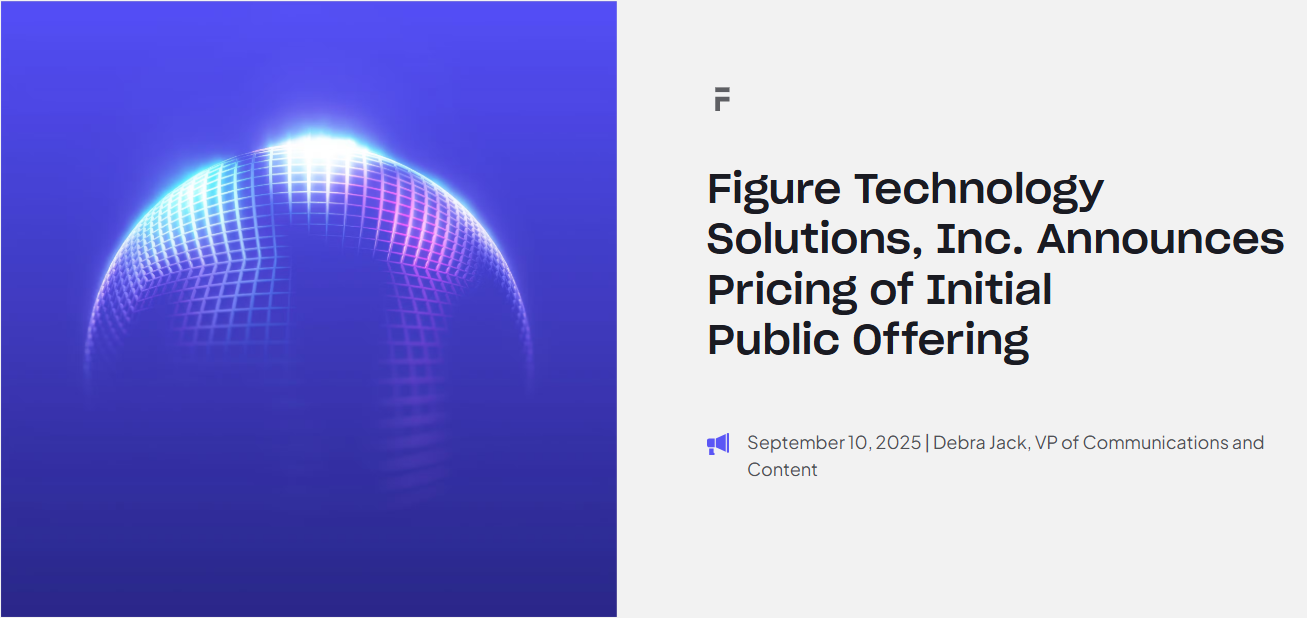Letter from the founder of Figure, the first RWA stock: DeFi will eventually become the mainstream method of asset financing
This piece distills Mike Cagney’s thesis that blockchain replaces trust with verifiable truth, pushing DeFi into mainstream asset financing. It recounts Figure’s on-chain milestones—$15B in loan originations and early (including AAA-rated) securitizations on Provenance—and explains how RWAs and stablecoins route liquidity to assets like Treasuries while lowering costs. You’ll get a practical playbook: start with small stablecoin lending, verify on-chain proofs, diversify across RWAs, and manage regulatory and smart-contract risks.

DeFi's Dawn: How to Prepare for Mainstream Asset Financing
Have you ever felt the thrill of a financial system that's truly borderless and efficient? Imagine flipping through a founder's letter that paints DeFi as the future of funding, much like opening a time capsule from tomorrow. It's surprising that over $15 billion in loans have already been originated on-chain, according to Figure (2025). For Web3 enthusiasts keen on real-world assets (RWAs) and stablecoins, traditional financing often feels clunky and exclusive, locking out everyday participants. Mike Cagney's recent letter, as Figure becomes the first RWA stock post-IPO, declares DeFi will dominate asset financing. In this post, you'll learn how this vision unfolds, so you can position yourself to thrive in an evolving ecosystem. Picture it as discovering a hidden garden path—simple, yet leading to abundant growth.
The Core Message: Blockchain's Superpower in Finance
First, let's unpack Cagney's letter. As co-founder of Figure, a blockchain lending firm, he shares his "aha" moment from 2017: blockchain replaces trust with truth, eliminating intermediaries in financial transactions. DeFi, or decentralized finance, uses smart contracts on blockchain to enable peer-to-peer lending and borrowing without banks.
Why does this matter? It promises a shift where assets are financed mainstream via DeFi, accelerating with laws like the GENIUS Act. For RWAs—tokenized real-world items like loans or treasuries—this means unprecedented liquidity. According to Cagney (2025), blockchain condenses multi-party markets to just buyer and seller, slashing costs by up to 85 basis points.
It's like swapping a crowded bus for a direct bike lane—faster and freer. A light-hearted nod: I once navigated a loan approval that felt like a comedy of errors with paperwork; DeFi could turn that into a seamless click. You can dip in by exploring platforms like Aave, starting with small stablecoin deposits to lend securely.
Figure's Journey: Pioneering On-Chain Achievements
Next, Cagney details Figure's path. Founded in 2018, the company originated loans on-chain, focusing on home equity lines of credit (HELOC) to prove blockchain's edge. They've since expanded to B2B, with over 168 partners using their tech.
The impact? Figure completed the first blockchain-native securitization in 2020 and AAA-rated one in 2023, originating $15 billion in loans and $50 billion in transactions. This positions them as RWA leaders, with Provenance Blockchain—a public PoS chain they support—enabling institutional adoption.
Observe this in action: during 2022-2023's $1 trillion bank deposit outflow, stablecoins could fill gaps by channeling funds to Treasuries, per U.S. Treasury insights. Try this when markets fluctuate: stake stablecoins like USDC in DeFi pools for yields, monitoring via tools like DeFi Llama.
Implications for RWAs and Stablecoins
Therefore, the letter spotlights RWAs and stablecoins. Stablecoins are cryptocurrencies pegged to fiat for stability, acting as DeFi on-ramps. Cagney envisions them directing trillions to assets like Treasuries.
For example, a Galaxy Digital report (2024) forecasts RWAs unlocking trillions by blending TradFi with Web3, echoing Figure's model. It's almost humorous—traditional banks fumbling while DeFi zips ahead like a caffeinated squirrel. Practical tip: When building a portfolio, allocate to RWA tokens via Centrifuge, verifying on-chain proofs for safety.
Addressing Risks: A Balanced Outlook
However, challenges persist. Regulatory hurdles and tech risks, like smart contract bugs, could slow adoption. A World Economic Forum study (2023) highlights volatility in DeFi, urging governance for stability.
Balanced takeaway: While DeFi offers efficiency, diversify holdings—blend stablecoins for defense with RWAs for growth—to navigate uncertainties.
Embracing the DeFi Shift
In short, Cagney's letter reveals DeFi's path to mainstream asset financing through blockchain's truth-over-trust model, spotlighting Figure's on-chain feats and the synergy of RWAs with stablecoins for liquidity and yields. This isn't distant hype but a tangible evolution.
Reflecting on that "aha" thrill, it's heartening to see finance democratizing. I'd love to hear your DeFi experiments—share in the comments which RWA you're exploring, or try a stablecoin lend and report back.
References
- Cagney, M. (2025). A letter from Mike Cagney, Figure’s co-founder & executive chairman. Figure
- Galaxy Digital. (2024). Real World Assets: The Next Wave of Tokenization. Galaxy Digital Research
- World Economic Forum. (2023). Navigating Crypto Volatility: Strategies for Institutional Investors. WEF